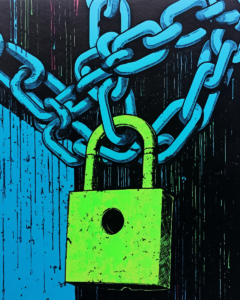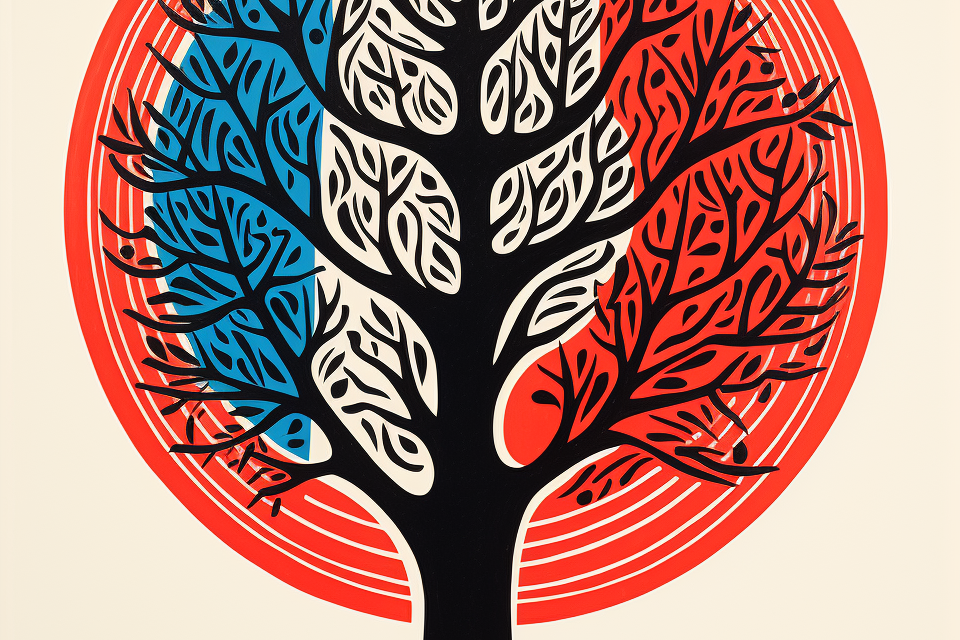Introduction

You’re on the cusp of making a major life decision, perhaps it’s a career change, a budding romance, or even exploring a hobby you’ve always wanted to. You’re brimming with excitement, your enthusiasm practically fizzing like a shaken soda can. And just when you’re about to leap, a tiny voice in your head says, “You’re not cut out for this,” “You’ll fail and be the laughing stock,” or “Who do you think you are?”
Meet limiting beliefs, those uninvited thoughts that sneak in and stall your progress. These are deep-seated convictions that dictate what you can and cannot achieve, often rooted in past experiences, societal norms, or even a passing remark from someone. Phrases like “I’m not a math person,” “All my relationships fail,” and “I’ll never land a better job” are prime examples.
The Power of Limiting Beliefs
You might dismiss them as inconsequential thoughts, but they’re far from harmless. Limiting beliefs act like speed bumps on the highway of your potential. They’re more influential over your actions—or lack thereof—than you might realize.
Why challenge these self-limiting scripts? Because they subtly guide your life, impacting your decisions, relationships, and even your self-esteem. Ignoring them means living your life with a self-imposed handbrake. Shattering these barriers is an essential milestone on your journey of personal evolution. So let’s dissect, analyze, and reframe these beliefs so they empower rather than restrain you. Because you deserve to live a life not hindered by limiting beliefs but fueled by empowering ones.
Understanding the Science Behind Limiting Beliefs
Think of limiting beliefs as an invisible fence encircling your yard. They keep you within a “safe” but restricting boundary, beyond which you fear failure or humiliation. But what’s the science behind these mental barriers? How do they form and gain such sway over us?
Let’s start at the beginning. Limiting beliefs often trace back to early childhood events. A simple comment from a parent, teacher, or friend can plant the seed. Childhood becomes fertile ground for these beliefs because our impressionable minds soak up the attitudes, prejudices, and beliefs around us. It’s not just overt messages that shape us; our interpretation of events can also craft a mental story that persists into adulthood.
Various psychological theories address limiting beliefs. Cognitive Behavioral Therapy (CBT) prioritizes identifying flawed thought patterns and beliefs as a cornerstone for mental wellness. Social Learning Theory, which focuses on how we acquire behaviors and beliefs by observing others, plays a role. There’s also Self-Perception Theory, suggesting that we derive our internal beliefs from observing our own actions—like looking into a psychological mirror.
These beliefs can be surprisingly pervasive, affecting everything from daily decisions to long-term aspirations. For instance, if you think you’re doomed in relationships, how committed will you be? If you’re convinced you won’t succeed in a certain field, you might not even give it a shot. These beliefs essentially become self-fulfilling prophecies, shaping our actions and, consequently, our outcomes.
They can also poison your relationships, influencing your interactions. A belief like “I’m not good enough” may manifest as jealousy or neediness, pushing people away. These experiences only reinforce your limiting beliefs, creating a hard-to-break loop.
Confronting Limiting Beliefs
Confronting limiting beliefs is not just popular self-help jargon; it’s pivotal for unlocking your full potential. It’s like removing that invisible fence—you’ll never know your true capabilities until you give yourself the freedom to explore. So let’s start tearing down those walls.
Discovering Your Limiting Beliefs
Discovering your own limiting beliefs is like embarking on a treasure hunt. At first, you see only the surface, but dig deeper, and you’ll find ingrained thoughts holding you back. What tools should you use for this excavation?
Begin with journaling. Just start writing about moments you felt limited, disappointed, or stuck. Examine your thought patterns during those times. Chances are, you’ll unearth some limiting beliefs.
Meditation is another avenue. Just find a quiet space to observe your thought patterns, aiming for awareness over analysis. After all, recognizing these thoughts is the first step toward meaningful change.
To guide your exploration, ponder these questions:
- What are some goals I’ve found difficult to reach?
- What thoughts surface when I picture achieving them?
- When did I last talk myself out of something, and why?
- Do phrases like “can’t,” “shouldn’t,” or “never” frequently pop up when discussing my capabilities?
Your answers act as signposts, pointing you to the beliefs that need reevaluation.
External Cues and Limiting Beliefs
External cues also indicate the presence of limiting beliefs. Ever felt envious when someone achieves something you want? That’s a clue. Maybe you engage in self-sabotaging behavior just as you’re about to break through. Another clue.
Addressing limiting beliefs is an ongoing process, but it’s a gratifying one. Each belief you confront expands your life’s potential. It’s akin to taking off tinted glasses you never knew you wore, making the world—and yourself—appear brighter and clearer. Now that you can see, you’re equipped to stride confidently toward your dreams. So grab that shovel; you might be amazed at what you find.
The Impact of Limiting Beliefs
Limiting beliefs are like that friend who offers you junk food while you’re dieting. They seem harmless enough, but before you know it, you’re off track. Let’s dive into how these mental roadblocks don’t just cap your growth but also affect your well-being and mental health.
Personal Development
Starting with personal development, say you’ve always wanted to start a business, but keep telling yourself, “I’m not business-savvy enough.” This thought subtly nudges you to stick with your 9-5 job. You skip entrepreneurship courses, miss out on networking, and brush off any entrepreneurial dreams as pipe dreams. In short, your limiting belief has seriously clipped your wings.
Missed Opportunities
Moving on to opportunities, let’s say you’re single and seeking a committed relationship. But there’s this voice in your head saying, “You’re not attractive enough to find love.” What’s the outcome? You avoid social scenes, give dating apps a miss, and decline invites that could lead to something special. Your limiting belief becomes a self-fulfilling prophecy, stopping you from seizing opportunities that could prove it wrong.
Mental Wellness
Switching gears to mental wellness, limiting beliefs can create ongoing stress and anxiety by constructing a mental space where you’re always coming up short. For instance, if you consistently think, “I’m not smart enough,” anxiety will cloud your every work presentation or academic test, irrespective of your true abilities. This enduring stress wears down your mental health, feeding a cycle of anxiety and self-doubt.
Imagine someone convinced they’re bad at socializing. This belief fuels social anxiety, leading them to avoid social settings. The result? Isolation, a significant risk factor for various mental health issues like depression. It’s not just a singular belief; it’s a domino effect unleashing a chain of negative experiences and mental health ramifications.
Overcoming Limiting Beliefs
Good news about self-limiting beliefs? They’re not set in stone. Think of them as weeds in a garden—annoying but totally removable with the right tools. And the toolset for confronting these beliefs is as diverse as it is effective.
Cognitive Restructuring
Kick off with cognitive restructuring, which basically means changing your thought patterns. Be your own detective, scrutinizing evidence for and against your limiting belief. You might discover they’re based on old or flawed data. With this newfound clarity, you can reshape these beliefs to serve you better.
Exposure Therapy
Exposure therapy is another useful method, especially for beliefs rooted in fears. The goal is to incrementally face what you fear in a controlled environment until it loses its grip. If your limiting belief is, “I’m awful at public speaking,” start with mirror practice, then move to small groups, scaling up as you gain confidence.
Journaling
Journaling, good old pen-and-paper therapy, is also helpful. Write down a limiting belief, then list the evidence supporting or debunking it. Seeing it on paper can make you realize how groundless it often is.
Mindfulness takes a different tack, focusing on awareness rather than direct change. Techniques like meditation help you observe thoughts non-judgmentally, letting you see limiting beliefs as thoughts, not truths.
Then there’s professional therapy. Trained therapists can offer various treatments to help you recognize and reshape your beliefs. An external perspective sometimes reveals insights you might not easily come to on your own.
Consistency and patience are key here. Rewriting a story you’ve been telling yourself for years takes time. Remember, you’re the author of your life; you have the power to revise or even rewrite chapters that hold you back. So pick up that pen and start crafting a life that aligns with your true desires.
Consider tackling a challenging mountain. You could go solo, but having a seasoned climbing team makes the ascent both easier and more enjoyable. Overcoming limiting beliefs is much the same—it’s a climb made simpler and more meaningful when backed by a supportive crew.
Support from Friends and Family
Your friends and family can be your first line of defense, offering a counter-narrative to self-doubts by spotlighting your strengths and accomplishments. Ever noticed how a good friend can instantly list all your awesome qualities you didn’t even recognize? That’s the power of a supportive network.
Mentorship and Guidance
Now, think about mentorship. These are people who’ve already scaled similar heights and can offer you a tried-and-true map. They’ll guide you past their own stumbling blocks, offering valuable shortcuts.
Support Groups
Support groups also play a vital role. Knowing you’re not alone in struggling with limiting beliefs provides both comfort and collective wisdom. You can glean coping strategies from others while sharing your own, forming an empowerment circle.
The Importance of a Support Network
See, overcoming limiting beliefs isn’t just about self-reflection; it’s about engagement. Your circle can offer alternative viewpoints, question your assumptions, and even hold you accountable. They’re also invaluable for maintaining mental wellness while you’re confronting these beliefs. When life throws curveballs, a trusted friend or relative can be a psychological lifesaver.
As you navigate this transformative journey, remember you’re not alone. Lean into your support network, seek mentorship, and consider joining self-improvement groups. Each offers unique support, making your quest for a life free of limiting beliefs a group expedition, not a solo trek. After all, reaching the summit is all the sweeter when shared with those who helped you get there.
Inspirational Stories
Let’s find inspiration by examining the journeys of individuals who have shattered their own glass ceilings, shall we? Understanding these life stories can be a compelling motivator, showing that altering limiting beliefs is not just achievable but truly transformative.
J.K. Rowling
Think about J.K. Rowling for a moment. Rowling navigated through unemployment, deep despair, and a broken marriage before “Harry Potter” became a worldwide sensation. She had every reason to give credence to the limiting beliefs that said she couldn’t make it as a writer. Yet, she chose to challenge that narrative. Rowling once said that hitting rock bottom served as the solid foundation upon which she built her life. Today, she is among the world’s most celebrated authors, and it all started with her decision to defy her circumstances and any limiting thoughts they may have spawned.
Howard Schultz
Next, meet Howard Schultz, the driving force behind Starbucks. Schultz was raised in a low-income housing project in Brooklyn’s Canarsie neighborhood. He could have easily fallen prey to the limiting belief that his background determined his value and future. Yet, despite initial obstacles, Schultz persisted with his vision of making Starbucks a “third place” between work and home. In creating an iconic brand, Schultz conquered both external barriers and internal doubts.
Oprah Winfrey
Then there’s Oprah Winfrey, who transcended a challenging and abusive upbringing to become a media titan. Early in her career, Oprah was told she was “unfit for TV news.” She could have allowed this limiting thought to define her, but instead, she chose to redefine herself. Oprah’s story is not just about professional success; it’s about shattering preconceptions about what a young Black woman from a troubled background could achieve.
The common thread among these individuals is their willingness to confront and replace their limiting beliefs with empowering mindsets that catapulted them toward their goals. They recognized that their outdated thought patterns were holding them back and took audacious steps to transform their thinking.
If these stories teach us anything, it’s that the journey of overcoming limiting beliefs is universal and essential for reaching one’s fullest potential. They show that personal growth is within reach for anyone willing to tackle and eliminate the thoughts that hold them back, no matter their starting point. So as you confront your own limiting beliefs, let these stories serve as compelling evidence that transformative change is not only possible but achievable.
Sustaining Progress
Climbing a mountain or overcoming limiting beliefs is rarely a straightforward ascent to success. Slips, detours, and even steps back are all part of the process. The goal is persistence, not perfection. So how can you ensure your progress is sustained?
Self-Reflection
Your navigational tool is constant self-reflection. Think of it as a periodic soul check-up, examining your progress and identifying any re-emerging patterns that might pull you back. Whether it’s through journaling, mindfulness activities, or quiet moments of introspection, gain insights by posing questions like, ‘How did I challenge my limiting beliefs today?’ or ‘When did I feel empowered, and why?’
Lifelong Learning
Now, let’s talk about lifelong learning—your evolving road map. As your understanding of yourself and your limitations grows, continue to educate yourself. Read new books, tune into insightful podcasts, or take classes that challenge your thinking and expose you to new perspectives. Remaining in a state of perpetual learning ensures that your mental map is continually updated, helping you navigate life’s complexities.
The Power of Community
But there’s one crucial element: community. Surround yourself with people who encourage your growth, whether that’s a mentor, friends, or a support network. Their perspectives can serve as a balancing force, helping you stay on course and preventing any unnoticed relapse into old habits.
Changing limiting beliefs is a tough task, and maintaining that change might be even more demanding because it’s a lifelong commitment. But let’s reframe this: it’s not a burden; it’s an ongoing adventure in personal growth, self-discovery, and expanding your horizons. Isn’t that what life is truly about?
The Journey to Transformation
There you have it. Overcoming limiting beliefs is more than just a tweak in your thinking; it’s a cognitive revolution. It’s like taking off a blindfold you didn’t even know you were wearing and suddenly seeing the world in its rich, boundless potential. As we’ve illustrated through real-life stories and actionable strategies, conquering your limiting beliefs isn’t a subplot in your life; it’s the main narrative. It’s the transformation that changes the caterpillar into the butterfly, enabling you to rise to new heights.
If you haven’t started yet, now’s the time to pinpoint your own limiting beliefs. For too long, these silent scriptwriters have been dictating your life’s storyline. So don’t just nod along with what you’ve read—take action. Whether it’s journaling, seeking guidance, or diving into new educational opportunities, remember that every epic journey starts with the decision to step out the door.
To dig deeper, consider books like ‘Mindset: The New Psychology of Success’ by Carol S. Dweck or ‘The Big Leap’ by Gay Hendricks. Both offer extensive insights into the realm of self-limiting beliefs and how to conquer them. Personal development websites, podcasts, and online courses also offer a wealth of practical advice.
So, what’s stopping you? The only barriers are those limiting beliefs that you are now well-equipped to challenge. Take heart in knowing that this path is well-trodden as you embark on this life-changing journey. You’re in good company. The process of questioning and overcoming your limiting beliefs is a collective climb toward unlocking greater potential and living fuller lives.
Dive in, take risks, and question the narrative you’ve been telling yourself. Because you’re not just the protagonist of your life story—you’re also its author. Start crafting a story that you will be proud to share.



